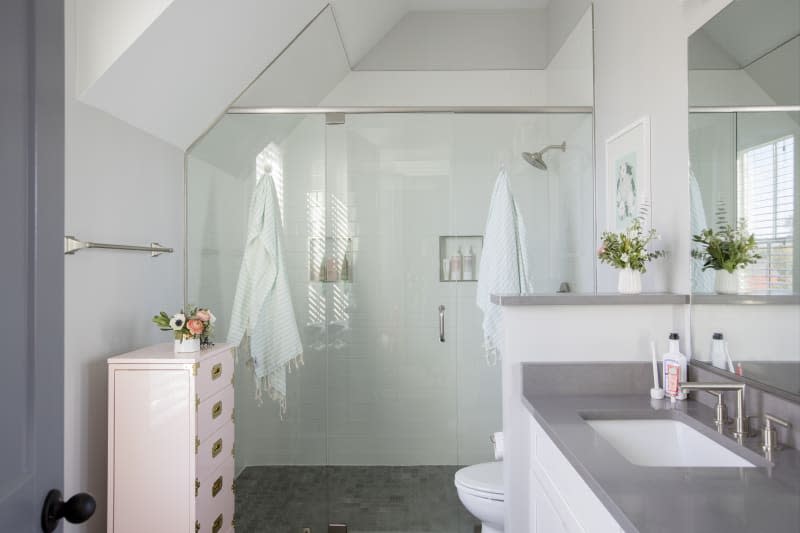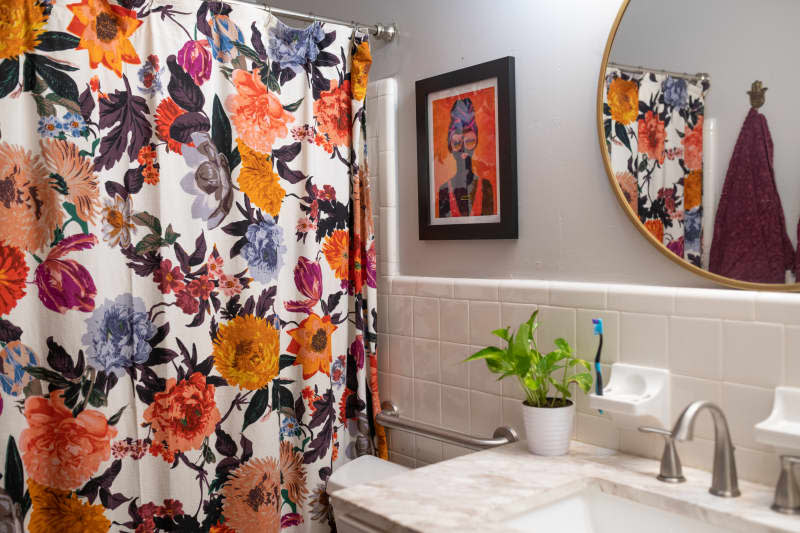The One Bad Bathroom Habit You Might Have

A little while back, I saw a viral TikTok making the rounds, in which a dentist makes a bold statement about a bathroom mistake I didn’t even realize I might be making. And if you only have one toothbrush, you may be making it too.
In the TikTok, Dr. Ellie Phillips says that bacteria flourishes among your toothbrush bristles when they don’t have the chance to fully dry out, which can take 24 hours. “Toothbrushes get really dirty, especially when they’re close to a toilet, in a damp climate where there’s humidity … and humidity is the worst thing for growing mold and actually allowing harmful bacteria to multiply inside the bristles,” Phillips says.
Her solution? Have two toothbrushes — one that you use in the morning and one that you use at night — so they each have a full day to dry out. “The only way to get rid of that biofoam bacteria that gets picked up and lives in your toothbrush is to dry your toothbrush for 24 hours,” she says. I was horrified. Have I been unwittingly brushing my teeth with a bacteria-ridden brush this whole time?
Suddenly grossed out and ready to hit “buy” on a second toothbrush, I decided to get a second opinion. When I turned to dentist Dr. Chris Salierno, chief dental officer at Tend, he confirmed that it is indeed important to dry out your toothbrush. Reassuringly, though, that shouldn’t take a full 24 hours.
So no, you don’t need two toothbrushes — unless you want total peace of mind. Salierno said several hours is often enough for your toothbrush bristles to dry out, and you can simply touch them to see if they’re ready for another use.
He also offered some helpful insight. “The good news is that most toothbrush bristles are made from material that does not permit mold to grow,” says Salierno. And, according to the Center for Disease Control (CDC), while bacteria and germs can be present on your toothbrush, introducing gross infection or other negative health effects by brushing your teeth is generally not a concern.

So personally, I’m going to stick to my one toothbrush, and start taking extra care to check that it dries out in between uses. If you’re still on the fence, here’s your reminder to schedule your next regular cleaning — you may want to ask your dentist what they think.
The Toothbrush Etiquette I *Will* Be Following
While I’m not running to the store to buy a second toothbrush just yet, this whole dental debacle did get me thinking more closely about my toothbrush routine than usual. After reading up on official advice and talking with Dr. Salierno, here are some best practices I’m standing by.
Storing my toothbrush upright. Per the American Dental Association guidelines: “Store toothbrushes in an upright position after use and allow them to air-dry. Storing a moist toothbrush in a closed container promotes microbial growth more so than leaving it exposed to the open air.” I already stash my toothbrush outside of the shower and in a cup to keep it upright, so all clear there, but it’s a helpful reminder.
Avoiding travel toothbrush covers. Salierno notes that drying is only an issue if you keep your toothbrush in a cover that is designed for travel, which can prevent the bristles from getting enough air circulation. Echoing the Center for Disease Control’s advice, Salierno says, “The best practice is to thoroughly wash the brush after use and allow it to stand upright to dry out.”
Not springing for a UV light sterilizer. Salierno says you don’t need to invest in one of those pricey UV light devices that are designed to disinfect your toothbrush after each use. “There isn’t any research to show that it makes a difference in your oral health,” he says.
Not sharing my toothbrush. More than worrying about the germs on your own toothbrush, Salierno says the bigger risk would come from using someone else’s brush. That’s where new bacteria is introduced (plus, for most people, it’s a major ick!).

